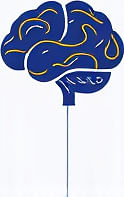Breaking Down Tasks for ADHD Productivity in Remote Work
 by Marlene Keeling
by Marlene Keeling
Discover practical strategies for managing ADHD in remote settings by breaking tasks into smaller steps. This approach supports focus and balance, helping adults with ADHD maintain productivity without overwhelming routines.

Remote work offers flexibility, but for adults with ADHD, it can present unique challenges. Large tasks often feel overwhelming, leading to procrastination or incomplete work. One effective strategy involves breaking tasks into smaller, manageable parts to build momentum and reduce stress.
The Importance of Task Breaking for ADHD
Breaking tasks helps create a clear path forward. For instance, a big project might start with simple actions like outlining key points. This method allows individuals to see progress quickly, which can boost confidence and maintain engagement during work hours.
In remote environments, distractions are common, making it harder to stay on track. By dividing work into bite-sized segments, people with ADHD can minimize the mental load and focus better. Consider how ADHD affects daily routines; smaller steps make it easier to handle demands without losing energy.
Practical Hacks for Breaking Tasks
Several techniques can make task breaking straightforward and effective. First, start by identifying the main goal of a task. Then, list out the sub-steps required to reach that goal.
- Use timers to work on one segment at a time, such as 15 minutes per step.
- Keep a notebook or digital tool to track progress visually.
- Pair tasks with short breaks to prevent fatigue.
For example, if preparing a report feels daunting, break it into researching facts, drafting sections, and reviewing content. This way, the process becomes less intimidating and more achievable.
Implementing Task Breaking in Remote Settings
Adapting this strategy to home offices requires some planning. Set up a dedicated space that minimizes interruptions, allowing for focused work sessions. Begin each day by prioritizing tasks and assigning them to specific times.
Many find that combining task breaking with routines enhances productivity. For adults with autism or ADHD, consistency is key. Try scheduling breaks for movement or relaxation to support overall well-being. Remote work allows for adjustments, like working during peak focus periods, which can lead to better outcomes.
Balancing Work and Life Through Task Management
Maintaining balance is essential for long-term success. Overloading schedules can lead to burnout, so it's important to include downtime in daily plans. After completing a set of tasks, take time to recharge with activities that bring joy, such as reading or walking.
This approach not only aids in managing ADHD symptoms but also promotes a healthier lifestyle. For instance, ending the workday with a clear endpoint helps separate professional duties from personal time. Over time, these habits can improve satisfaction and reduce anxiety.
Tips for Sustaining the Habit
To make task breaking a regular practice, start small and build from there. Review what worked at the end of each week and adjust as needed. Involve supportive colleagues or family members for accountability, sharing progress without pressure.
Remember, everyone’s needs differ, so experiment with different methods until finding the right fit. With patience and practice, breaking tasks can become a reliable tool for thriving in remote work.
In summary, this strategy offers a supportive way to handle challenges associated with ADHD. By focusing on small wins, individuals can achieve greater productivity and enjoy a more balanced life.
